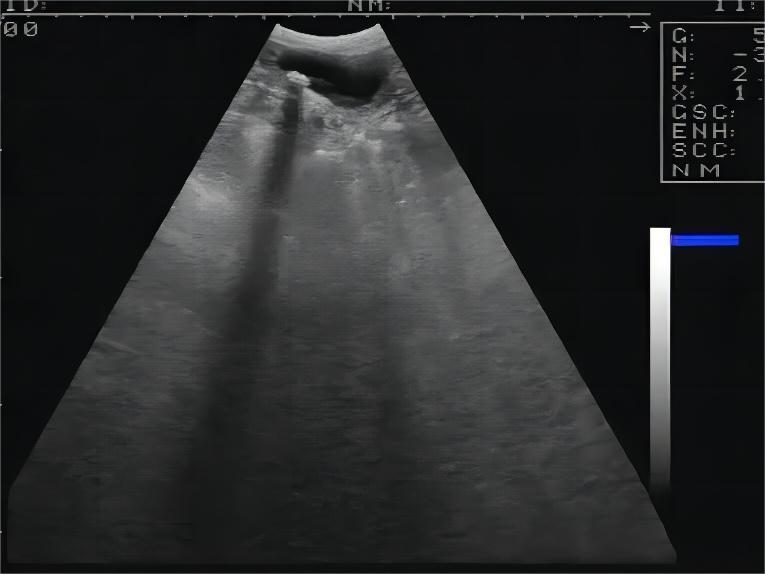Cirrhosis is a common liver disease in pet dogs, especially prevalent in older dogs and certain susceptible breeds. Cirrhosis is the result of chronic liver injury and fibrosis, leading to replacement of normal liver tissue with fibrous tissue, which in turn affects liver function. Ultrasonography, as a non-invasive and highly sensitive imaging tool, plays an important role in diagnosing and monitoring cirrhosis in pet dogs.
Clinical manifestations
The findings of cirrhosis on ultrasound sonography change with the course of the disease and other complications, making early diagnosis difficult. Ultrasound images show a shrunken liver with nodular lesions and heterogeneous echogenicity. Liver atrophy is more obvious on ultrasound at the end stage of cirrhosis. When the entire liver is cirrhotic, the liver appears smaller. Cirrhosis is often accompanied by ascites.
Applications of Ultrasound in Pets
Ultrasonography is an important tool for assessing the structure and function of the liver in pet dogs. Common ultrasound manifestations in cirrhosis include the following:
Changes in liver size and morphology:
Early cirrhosis may present as an enlarged liver (hepatomegaly), whereas advanced cirrhosis may present as a shrunken liver (hepatic atrophy).
The surface of the liver may be irregular with nodular projections, which are the result of fibrosis and regenerative nodules.
Echo characteristics:
The liver echoes are enhanced (hyperechoic), which is due to increased fibrous tissue.
Liver echoes are heterogeneous, as evidenced by multiple areas of alternating hyperechoic and hypoechoic areas within the liver tissue, which is the result of fibrosis and regenerative nodules.
Hemodynamic changes:
Doppler ultrasound can show changes in portal venous flow. In cirrhosis, elevated portal venous pressure may result in slowed or reversed blood flow (portal hypertension).
Hepatic arterial blood flow may increase to compensate for the lack of hepatic blood supply.
Presence of ascites:
Cirrhosis is often accompanied by ascites, which is caused by elevated portal pressure and hypoproteinemia. Ultrasound can clarify the presence of ascites and its volume.
Changes in the gallbladder and bile ducts:
Cirrhosis may be accompanied by cholestasis, and ultrasound may show enlargement of the gallbladder, dilatation of the bile ducts, or the presence of bile sludge.
Diagnosis
Despite the important role of ultrasound in the diagnosis of cirrhosis, ultrasound alone cannot completely confirm the diagnosis of cirrhosis. It needs to be analyzed in combination with medical history, clinical symptoms, blood biochemical tests (e.g. liver function index, serum albumin, coagulation function, etc.) and other imaging tests (e.g. CT, MRI). In addition, liver puncture biopsy remains the gold standard for confirming the diagnosis of cirrhosis, but due to its invasive nature, it is usually performed when imaging tests strongly suggest cirrhosis.
Treatment and prognosis
Treatment of cirrhosis focuses on treating the cause of the disease as well as symptomatic treatment. This includes the use of hepatoprotective drugs, antioxidants, diuretics (for ascites), and nutritional support. Prognosis depends on the cause of cirrhosis, the severity of the disease, and the presence of complications.
Pet ultrasound has an important role in the diagnosis and monitoring of cirrhosis in dogs. Ultrasound allows assessment of liver size, morphology, echogenic features, hemodynamic changes, and the presence of ascites and biliary changes, which can help in early detection and intervention, thereby improving the quality of life and prognosis of pet dogs. Through timely and accurate diagnosis, as well as rational treatment and management, the progression of cirrhosis can be effectively controlled, improving the survival rate and quality of life of affected pets.
To inquire about the detailed product introduction of pet color ultrasound machine, cat and dog ultrasound, welcome to contact us online!
Post time: Aug-06-2024




